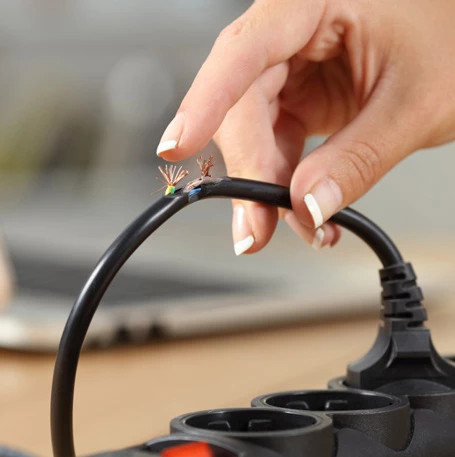If you own a rental property in England, Scotland or Wales you must have an Electrical Installation Condition Report or EICR carried out every 5 years. The EICR is performed by a qualified electrician and designed to ensure the integrity and viability of electrical systems so that tenants are not subjected to unnecessary dangers.
Upon completion of testing the inspecting electrician will compile the results into a detailed report, the EICR. The report will note any observed deterioration of the system, damage to any system components and BS7671 non-compliance issues (if any). In the event of an unsatisfactory EICR, the inspector will indicate the appropriate remedial action that should be taken.
What Does EICR Testing Involve?
An EICR-related inspection involves the following actions by a qualified electrician.
During the visual inspection, the registered electrician surveys all aspects of the electrical installation. They are looking for any signs of damage or potential problems including improperly installed devices, broken devices, cracked components, overheating issues and more.
Electrical testing comprises several different kinds of testing:
During the testing process, the inspector will make note of any issues and designate them as either C1, C2, C3 or F1.
The most common EICR failures (but not the only ones) include failing the RCD safety test, failing the earth fault loop impedance test, insufficient insulation around various electrical system components and having non-IP rated lights in the bathroom.
Following completion of the EICR, the inspector will explain their findings and provide the landlord with a cost estimate to conduct any necessary remedial action.

If a Building Receives an Unsatisfactory EICR, What Happens Next?
C1, C2 or FI issues will result in an unsatisfactory EICR. Should the EICR include any C1, C2 or F1 issues the law is clear they must be addressed by a qualified electrician without delay.
The landlord will have 28 days from the date of receiving the unsatisfactory EICR to carry out appropriate remedial work.
In some C1 cases, however, the inspector may advise the landlord that they must act immediately to correct the issue. In other cases, they may stipulate a shorter deadline - such as 10 to 14 days.
Upon completion of the remedial work, the electrical professional who performed the work will provide written confirmation to the landlord of all corrective steps taken. The landlord will then be compelled to inform both the tenant (or tenants) and the local authority within 28 days.
In the event a subsequent inspection of the property indicates there are still safety or viability issues then the process must be repeated, with the landlord having 28 days (or less) to complete the work and then 28 further days to notify tenants and the local authority.
The written confirmation provided by the electrician who performed the corrective work is all that is needed to transform unsatisfactory EICRs into satisfactory EICR certificates.
That said, if for any reason the landlord schedules a subsequent inspection of the electrics and that inspection turns up additional serious issues then further corrective action will be necessary.

If an EICR is Unsatisfactory Does it Prevent a Landlord From Allowing a New Tenant to Move In?
Yes. If a building has received an unsatisfactory EICR then any and all recommended remedial work must be performed by a qualified electrician before a new tenant is allowed to move in. If the corrective work is not completed by the scheduled check-in date for the new tenant, that check-in date must be moved back to a date after the remedial work is complete.
Whether the tenant moves in on the originally scheduled date or on a rescheduled later date the landlord must provide them at check-in time with a copy of the electrician's confirmation report indicating the work has been completed and the building is now EICR compliant.
Although the number has been dropping in recent years due to the implementation of the EICR there are still more than 20,000 residential fires every year in the UK caused by electrical faults. The EICR is designed to reduce that appalling number and ensure renters are living in safe, electrically sound buildings.
The EICR also provides an important benefit to landlords. If a rental property receives a satisfactory EICR and something occurs with, say, an electrical appliance in one of the rented flats, the landlord cannot be held accountable as they are in compliance with all electrical safety steps required by law.
If the time has come to have your rental property inspected contact the professionals at Energy Performance Certificates. We have the experience and expertise necessary to conduct your EICR assessment in a timely fashion so you can continue operating your rental property without delay or interruption. Call EPC today on 0203 397 8220.
